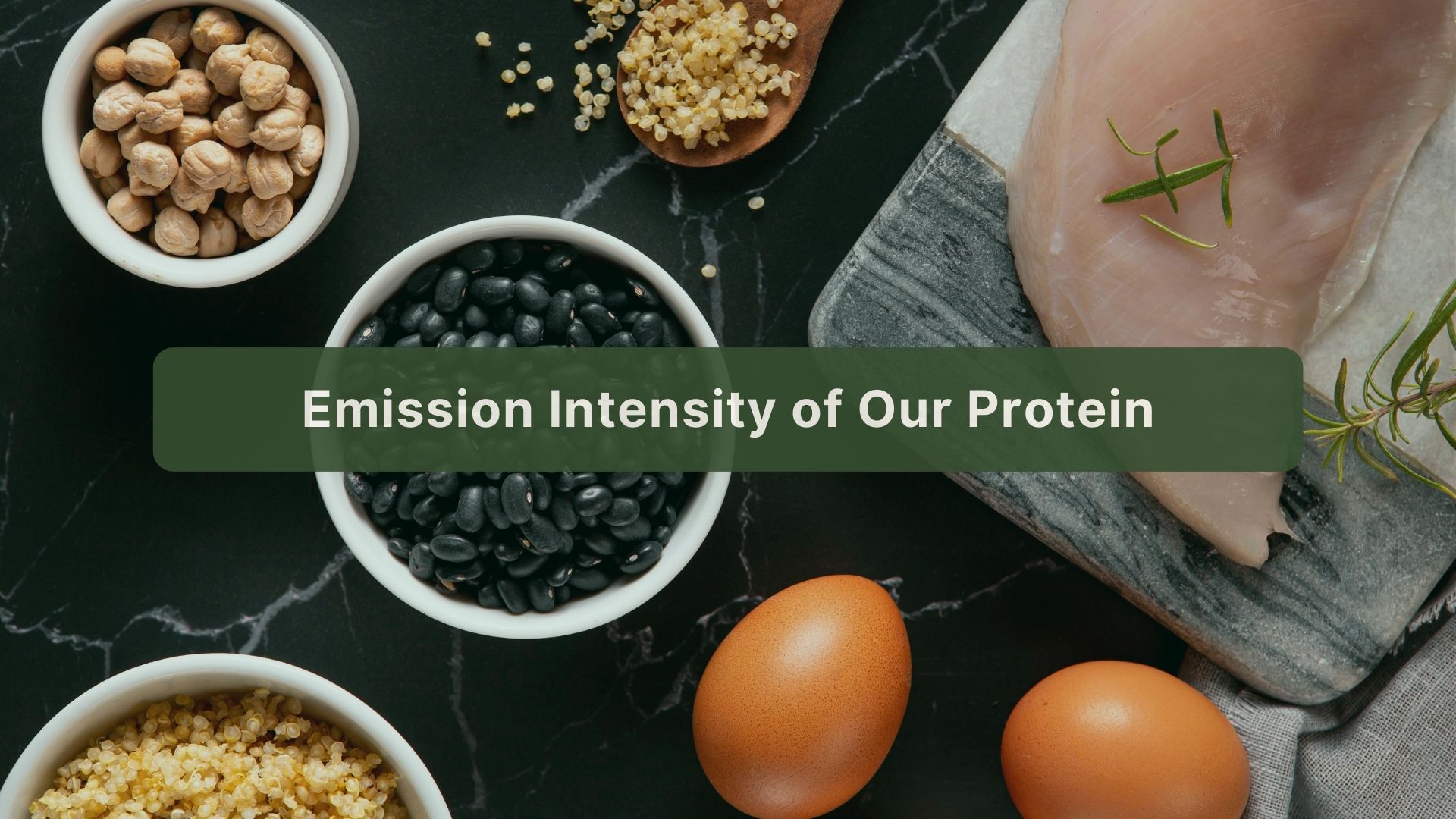Carbon Footprint of Protein Sources
Science

Choosing more sustainable foods is one of the things we can do to reduce our personal carbon footprints. Sufficient protein intake is necessary for physical growth and repair, with animal meat and dairy being the popular protein sources. However, animal-derived proteins are usually carbon-intensive. Research from Nature Food found that 57% of greenhouse gas (GHG) emissions related to food production comes from the production of animal-based food, 29% from the production of plant-based food, and 14% from other utilizations.
Activities contributing to the enormous GHG levels of animal products include land clearance, crop cultivation, establishing grazing land, manufacturing and transportation of fertilizers, enteric fermentation, manure management, product processing, and transportation. Enteric fermentation is the natural digestion process of ruminants - animals with four-chambered stomachs such as sheep and cow - which causes the belching of methane, a GHG that is 27 times more powerful than carbon dioxide.
A rank of the carbon footprint of common protein sources is shown below.
| Protein Source | GHG per 100 grams of Protein (kg CO2eq) |
|---|---|
| Beef (beef herd) | 49.89 |
| Lamb & mutton | 19.85 |
| Prawns (farmed) | 18.19 |
| Beef (dairy herd) | 16.87 |
| Cheese | 10.82 |
| Milk | 9.50 |
| Pork | 7.61 |
| Fish (farmed) | 5.98 |
| Poultry | 5.7 |
| Eggs | 4.21 |
| Tofu | 1.98 |
| Peas | 0.84 |
| Nuts | 0.26 |
More Sustainable Diets
Opting for less meat-based, more plant-based diets presents major opportunities to save GHG emissions, as found by the Intergovernmental Panel on Climate Change (IPCC):
- Vegan, a completely plant-based diet, can save more than 7.5 Gt of CO2eq
- Vegetarian, a diet comprising plant products, eggs, dairy, and only 1 serving of meat or seafood per month, can save around 5.9 Gt of CO2eq
- Flexitarian, a diet with modest amount of animal protein with only 1 serving of meat per week, can save around 5.2 Gt of CO2eq
- Pescetarian, a diet comprising plant products, eggs, dairy, and seafood, can save around 4 Gt of CO2eq
- Climate carnivore, a diet where 75% of ruminant meat and dairy are replaced by other meat, can save almost 3.5 Gt of CO2eq
What About Alternative Meat?
Science has allowed us to create protein alternatives such as plant-based meat from pea or soy protein and cellular (lab-grown) meat. According to research from Johns Hopkins Center for a Livable Future, plant-based meat produces 1.9 kg of CO2eq per 100 grams of product and cellular meat produces 5.6 kg of CO2eq per 100 grams. These meats have notably lower emissions compared to real beef meat (25.6 kg of CO2eq per 100 grams) although they are still higher than other real protein sources such as tofu, less processed peas, and wild tuna. However, a large proportion of their emissions come from the energy required to manufacture them, so their footprints can decrease if the electricity grid is powered by low-emission energy.
Want to expand your knowledge on decarbonization and carbon market topics? Don’t miss our weekly articles on Insights page and follow our LinkedIn to stay updated 🌳
References:
Dunne, D. (2020). Interactive: What is the climate impact of eating meat and dairy? CarbonBrief. https://interactive.carbonbrief.org/what-is-the-climate-impact-of-eating-meat-and-dairy/index.html
Gerretsen, I. (2022). What is the lowest-carbon protein? BBC. https://www.bbc.com/future/article/20221214-what-is-the-lowest-carbon-protein
Intergovernmental Panel on Climate Change. (2019). Chapter 5 - Special Report on Climate Change and Land. IPCC. https://www.ipcc.ch/srccl/chapter/chapter-5/
Xu, X., Sharma, P., Shu, S., Lin, T.-S., Ciais, P., Tubiello, F. N., Smith, P., Campbell, N., & Jain, A. K. (2021). Global Greenhouse Gas Emissions from Animal-based Foods are Twice Those of plant-based Foods. Nature Food, 2(9), 724–732. https://doi.org/10.1038/s43016-021-00358-x

